5 Things Every HR Director Should Know
Recruitment is a never-ending process and finding the right people is only the beginning. Retaining good talent while managing underperformance is all a part of the job. The larger the organization, the more resources needed to deal with all the moving parts. No matter the size of the job, there are five things that every human resources director should know:
1. Keep standards high, even when the pressure is on, by being proactive.
Most organizations tend to think recruiting isn’t necessary if every position is filled. Just like how technology is constantly changing, your industry will change, your needs will change, and eventually your people will change. The last thing that will stay the same is the recruitment process. Whether you are actively or passively looking to hire, staying head of the curve allows your organization to proactively engage with top talent. This allows you to draw from a list of top tier candidates, not just settle for the best in the available candidate pool. By keeping the lines of communication open all the time, recruitment costs less, brings in more qualified candidates and eliminates roadblocks that prevent the growth of your organization.
2. Hire great athletes, not all-stars/specialists.
Hiring someone who specializes in only one specific area can be a problem in the event that you want to expand the position. While you have someone who is great at one thing, that thing may change, the industry may change or you may find a more effective way to do that task. Hiring an individual who can adapt, grow and navigate the rapids of change within the organization is going to be the one to bring the most return to the organization.
3. Utilize your current employees.
Facebook is an exceptional platform for wasting time but can also be useful for person-to-person communication. Use the employee engagement to your advantage by encouraging them to share open job opportunities across their social networks, including LinkedIn. When the referral comes from your own employees, it creates a potential new source of candidates and provides more impact and credibility for your business.
4. Promote culture.
An organization that can sell itself by promoting a positive culture has a competitive advantage. A positive, creative culture that promotes itself does not happen overnight. It takes time to build and maintain. Factors include things like accountability, reward/recognition, flexibility, work-life balance, promotion, and employee involvement in decision making. Each generation, whether it’s millennials or Generation X, have different desires when looking for the perfect work environment. Creating a dynamic environment that employees aspire to work within is the right for any hiring organization.
5. Utilize recruiting websites.
Websites are like a silent salesperson. They never tire, rarely are sick – though they do develop viruses from time to time – and have the potential to reach the highest concentration of active jobseekers. Dedicate a section of your website to hiring. Include a strong branding message, your mission statement, a video or photos showing your unique company culture and a roster of benefits. It’s important that you provide potential candidates a deeper understanding of your culture and values prior to beginning the interview process. With analytics, you can also gain insight into the type of jobseeker you are attracting to your site, understand where they come from and even follow them with ads once they leave your site.
No matter what industry you are in, it is important to keep in mind that recruiting is an ongoing cycle that is vital to the success of your company. Positioning your company’s brand in the right way will attract high quality candidates and ultimately turn them into invaluable employees.





